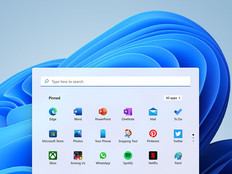OPM, Navy and Coast Guard Lead the Way
OPM is among a growing number of federal agencies starting the early transition to Windows 11.
At the Department of the Navy, a July 2022 memorandum from then-CTO Jane Rathbun, now CIO, directed Navy organizations to “begin planning now” for Windows migration.
Organizations using Windows 10, Rathbun wrote, should develop cost estimates for the upgrade and consider using technologies such as endpoint virtualization “for systems that have hardware/software compatibility issues” with the new OS.
Similarly, the Coast Guard’s C5I Service Center and Cyber Command announced in June 2023 that all workstations at the military branch would be automatically updated to Windows 11 within six weeks.
Other agencies are also looking ahead to the still-distant upgrade deadline, but most have yet to pull the trigger on widespread deployment. At both NASA and the National Institutes of Health, for example, agency equipment acquisition programs have begun offering devices with Windows 11 already installed.
At the Department of Education, CIO Luis Lopez says the agency hasn’t established a timeline for implementation, “but it is on the radar, and we’re looking at it very closely.”
And at the General Services Administration, the agency’s director of infrastructure integration reports they’re “actively working on” the OS transition and are about to stand up a Windows 11 test lab.
Testing, explains Sid Sripada, who works in the agency’s Office of Digital Infrastructure Technologies, will allow GSA to ensure the new system meets its security and infrastructure management requirements.
Once that’s confirmed, they’ll turn the labs over to their application development teams for testing, validation and certification of agency applications on the OS. From there, Sripada says, the agency should have everything it needs to “create a strategic implementation plan.”











